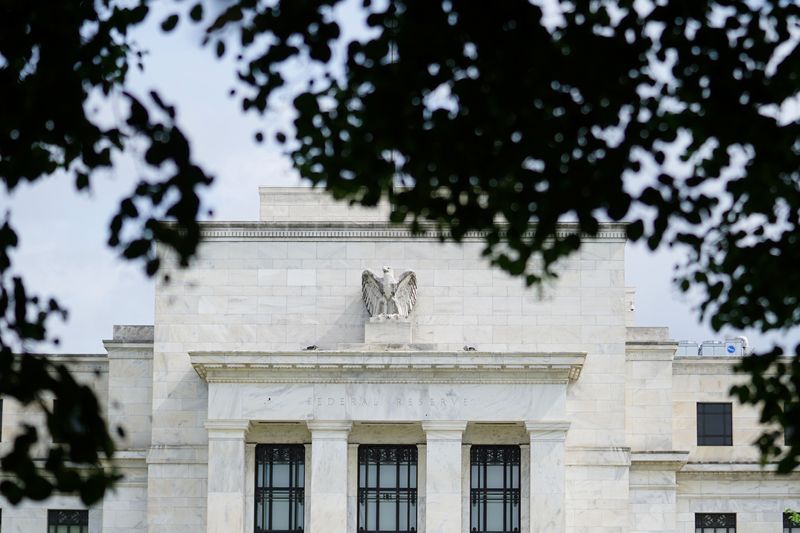By Howard Schneider
CHICAGO (Reuters) -There is a strong consensus at the U.S. Federal Reserve to raise the target policy rate to around 4.5% by March and hold it there while the central bank evaluates the impact on inflation and gives supply chains time to heal, Chicago Fed president Charles Evans said on Monday.
Incoming data would have to "rock" current projections in a fundamental way to upend that plan, which Evans said would put Fed policy, when adjusted for expected inflation, at a level historically associated with prices coming under control.
"There's not really a lot of difference" at this point among Fed officials' views about appropriate policy, Evans said. "We're headed for this four and a half percent-ish federal funds rate by March...We are going to put a lot of restrictiveness in place no matter what the data comes in at, unless there was really a lot in the next two months. There's not enough time for that."
Evans spoke amid rising concern that the pace of Fed rate increases may be putting stress on the global economy and be outpacing the Fed's ability to assess the impact it will have on the real economy.
In remarks to a National Association for Business Economics conference, Evans said the rate currently in for next year is meant to balance the need to restrain demand through rising market interest rates while giving supply chains a further chance to heal and avoiding a sharp rise in unemployment.
"I think we can bring inflation down relatively quickly
while also avoiding a recession," Evans said, citing "unusual behavior" in the economy that should allow the Fed "to disinflate without a large increase in unemployment if we navigate the path to a reasonably restrictive policy setting carefully and judiciously."
While acknowledging recent market volatility and that he might be "sounding rather optimistic," Evans said he thinks that because of "unusual interactions" between the job market and supply chains, "labor market stress is having a larger effect on inflation than would typically be the case."
As higher interest rates curb demand and reduce "the heat" in labor markets, Evans said that same dynamic should allow inflation to fall "without having to generate an inordinate amount of slack in the economy" in the form of markedly higher unemployment.
Current Fed projections show the unemployment rate rising nearly a percentage point, to 4.4% by the end of next year from 3.5% as of September, while the Fed's target measure of inflation drops to 2.8% from the current 6.2% as of August - a substantial movement towards the Fed's 2% target.
Evans called that "a pretty good looking soft landing."

"While this does represent a noticeably softer labor market when compared with today's, these certainly are not recession-like numbers," Evans said.
The Fed has raised interest rates from near zero as of March to a range between 3 and 3.25%, moving most recently in three quarter point increments in a rapid effort to restrict credit and slow demand. Policymakers are expected to approve another three quarter point increase at its Nov. 1-2 meeting.
